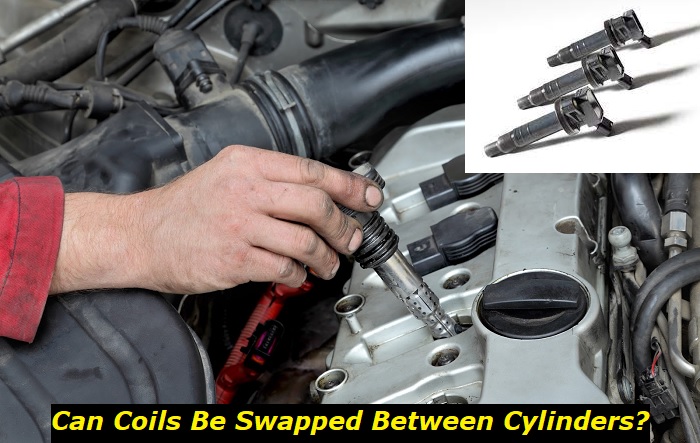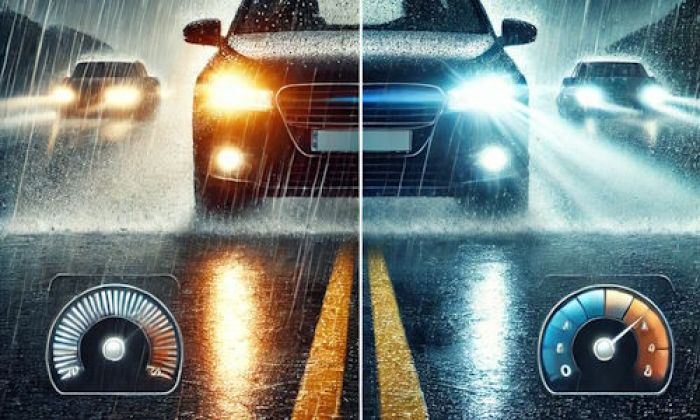In most cars, it doesn't matter which coil goes where but it's important that the cables are connected properly. Also, in some vehicles, ignition coils will be coded in the ECU and if you swap them, they will not work. It's important to make sure that you connect everything correctly because the mistake can lead to very serious issues in the end.
Ignition problems highlights
- DIY repairs:possible
- Tools needed:basiccar repair tools
- Commonreasons:ignition coils, spark plugs, wiring, power supply
- Time to repair:1 - 3 hours
- Price for parts:$50 - $250
- Can you drive?Yes
- Alternative solutions:limping, swapping spark plugs, swapping ignition coils

Why isn't the coil order so important?
Well, in the majority of cars, the ignition coils are just the same for each cylinder. They are just like spark plugs - you can interchange them between cylinders and nothing bad will happen given they are in good condition. But in some new vehicles, the coils may be coded and their codes are programmed in the ECU. This is a pretty rare thing to encounter though.
In general, coils are interchangeable and can go to any cylinder. But it's important to connect the correct cables to them. That is, if you swap the coils in the third and the fourth cylinders, make sure the cables remain the same for these cylinders. If you install the coils with old connections, a disaster may happen.
Here are some things to remember:
- the ignition coils in your vehicle are the same for each cylinder, you shouldn't worry about that unless you have a very expensive and modern vehicle;
- the connections should always remain stable - the cable that now powers the fourth cylinder should always power only the fourth cylinder even if you swap coils;
- the coils should be of the needed type and model - otherwise, the engine will not work and can even get broken;
- the coils may be swapped to check if they are working - this is a pretty common thing that mechanics do in shops;
- if your coils go bad too early, there should be a reason for that, usually, these parts work for quite a long time.
It's important to understand how coils work. They take the charge from the battery and transform it to the high-voltage current needed to fire the spark plug. All coils that are used in your engine work this way - they all have the same voltage features, the same construction, and the same working stages, so they are identical.
Also, it means that when you are buying the new coil for your vehicle, you shouldn't specify which cylinder is failing in your engine. Just order the ignition coil that matches the VIN of your car. This coil will fit any cylinder in the engine.
Can you swap coils to check them?
As I've already told you before, you can swap coils to check them. But how? For this, you will need a code scanner that can read codes from the ECU. It's not that hard even if you don't have the scanner - you can buy the ELM scanner which costs $10-20. I don't recommend them though, some of these scanners can even be dangerous for your vehicle.
So, let's imagine you have a good scanner and it gives you the P0302 code. This code means that cylinder two is misfiring. There are two most obvious reasons for misfires in your engine - bad coils and bad plugs. You may replace all of them, but you can save some money and find out which exactly is faulty.
Here's how you do this:
- Disconnect and take off the ignition coil in the second cylinder.
- Disconnect and take off the ignition coil in any other cylinder (let it be the first one).
- Swap those coils and connect them correctly.
- Start the car and let it work till you see the check engine light.
- Connect the OBD2 scanner and read the code.
- If the code is still P0302, then the coil is OK and there is another problem.
- If the code is now P0301, then it's obvious that the coil is bad because the problem moved with the coil to the first cylinder.
You can also check the spark plugs this way. Swap them and see if the code changes. This is one of the quickest methods to check the coils and it costs you zero dollars, so you can do this on your own in your garage or even in the parking lot near the supermarket. But be careful with the cheapest ELM scanners though - they may be dangerous for the ECU.
What if you connect the coils wrongly?
The golden rule when you connect the coils is that the wire for the first cylinder should always be connected to the coil that is installed in the first cylinder. If you swap the wires, the ECU will still think that it fires the first cylinder and the engine will shake like crazy. It will likely start but it won't work well and will have no power.
Also, if you try driving such an engine, you will have issues with it. The engine may literally fall apart, especially if it's quite old and has a lot of miles on it. Just remember about it the next time you are going to try and repair something under the hood of your car. Connections are extremely important!
Can you replace just one coil when it fails?
You may have heard from repair shop mechanics that the coil should be only replaced in the pack. If one fails, you need to buy the pack that costs several hundred dollars for an aftermarket set, they say.
This makes sense if your engine has 200K miles on it and the coils are still original. In this case, you should be glad that the coils have lived so long. But if the engine is relatively fresh and only one coil is malfunctioning, it's OK if you replace just one coil. The same works with spark plugs, but of course, those ones don't live as long and usually need replacement more often.
Can you replace the coil on your own? Actually, yes, there is nothing super complicated in this process. Here's a short description of the work:
- First, locate the malfunctioning coil with the scanner and the swapping method.
- After that, order the new coil online - use the VIN to make sure the coil will suit your engine.
- Take off the old coil.
- Install the new one using the same fasteners.
- Connect the new coil.
- Start the engine and let it idle for some time.
- Connect the scanner and make sure that the code is gone.
You may need to drive the car for some time to make the code go away. Alternatively, you may clear the code with the scanner or disconnect the battery for a while. After that, keep an eye on the check engine light. If it reappears, this may mean that there is still some problem with the engine.
What are the signs that a coil should be replaced?
Usually, you will not have any signs before you see the check engine light. The coils will fail slowly, day after day. They will start misfiring a little and the ECU may not even notice this at once. But it's extremely important to react whenever you see the check engine light. If the code is P0300 or P030N where N is the number of the cylinder, you need to check the coils first.
Driving a car with a misfiring engine is not really advised, so you should repair it as soon as possible.
Here's what happens if you keep driving:
- the coil keeps deteriorating;
- it will likely kill the spark plug;
- the misfiring engine will leak fuel into the crankcase;
- also, the excess fuel will burn in the exhaust system;
- the catalytic converter will overheat;
- the fuel efficiency and engine power will get much worse.
But the worst thing is that the badly misfiring engine will obviously lose its longevity. It may die much earlier than it could potentially last because of overheating, fuel leakages, dilution of oil, and other problems that accompany misfiring.
That's why it's extremely important to look for any signs of the problematic coil which include the check engine light, the P030N code (N can be any number denoting the number of the cylinder), and loss of power and fuel efficiency.
Final thoughts
It can be quite hard to locate the problematic coil on your own. But if you read this article carefully, you will know the method of swapping coils. Also, you now know that it doesn't matter which cylinder the coil is powering now. It can be installed into any other cylinder and it will work without any problems there if it's not broken.
I hope I managed to answer your questions that brought you to this page. Also, share your experience in the comments and ask questions if any of them left!
About the authors
The CarAraC research team is composed of seasoned auto mechanics and automotive industry professionals, including individuals with advanced degrees and certifications in their field. Our team members boast prestigious credentials, reflecting their extensive knowledge and skills. These qualifications include: IMI: Institute of the Motor Industry, ASE-Certified Master Automobile Technicians; Coventry University, Graduate of MA in Automotive Journalism; Politecnico di Torino, Italy, MS Automotive Engineering; Ss. Cyril and Methodius University in Skopje, Mechanical University in Skopje; TOC Automotive College; DHA Suffa University, Department of Mechanical Engineering






Add comment